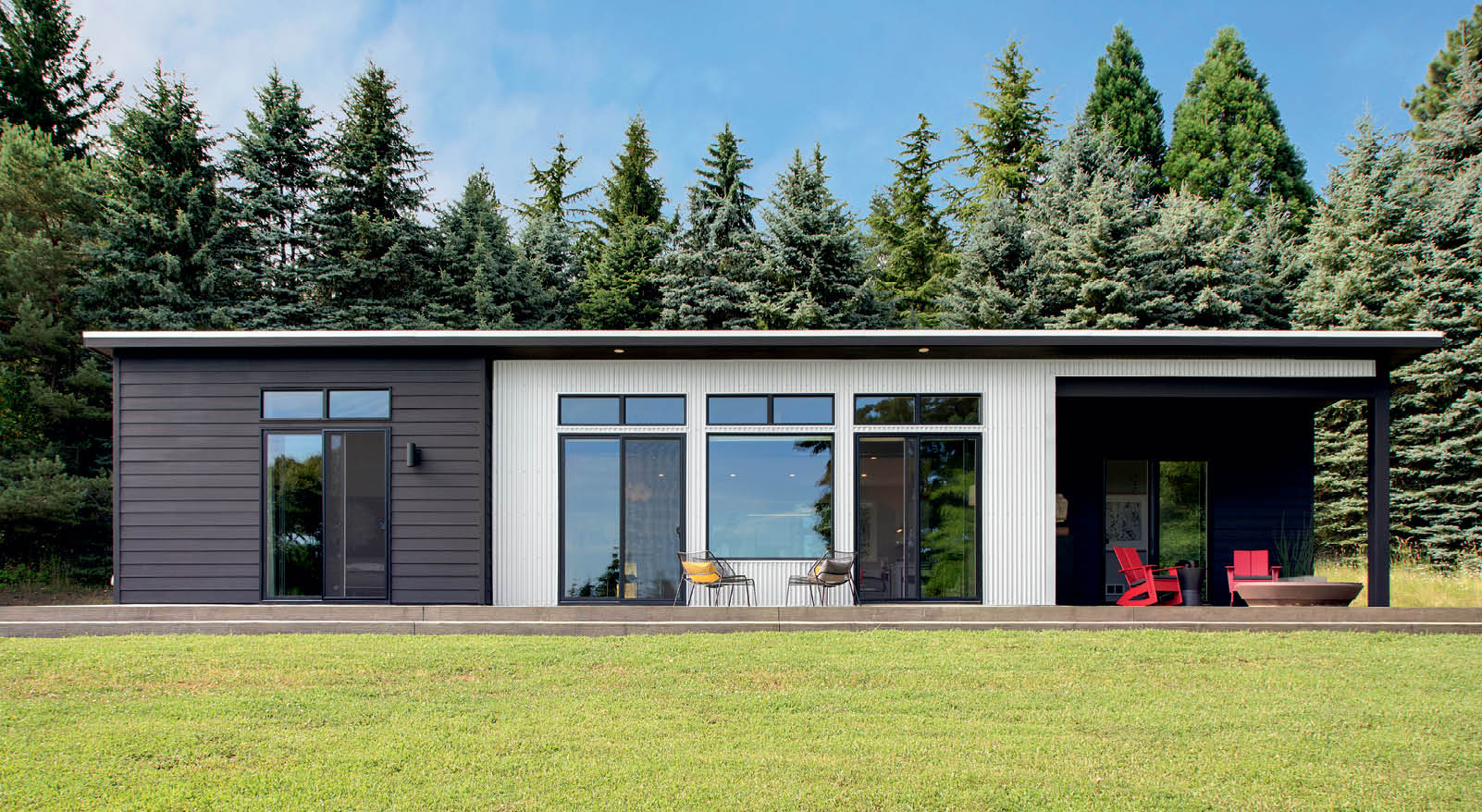For Bryan, Kimberly, Abigail, and Amelia Warman with much love.
Digital Edition 1.0
Text 2023 Sheri Koones
Front cover photo: 2023 Martin Knowles
Additional photographic credits are found on the opening page of each chapter.
All rights reserved. No part of this book may be reproduced by any means whatsoever without written permission from the publisher, except brief portions quoted for purpose of review.
Published by
Gibbs Smith
P.O. Box 667
Layton, Utah 84041
1.800.835.4993 orders
www.gibbs-smith.com
ISBN: 9781423663607 (ebook)
Library of Congress Control Number: 2022941929
Contents
Introduction
It has been my pleasure over the years to closely watch the evolution of housing, which has vastly changed with time. These changes have occurred with the development of more energy efficient products, increased interest in environmental issues, the enactment of more stringent building codes, and the availability of equipment that now allows for healthier, more comfortable and energy efficient homes.
A big issue in North America is the tremendous shortage in housing. The number of households formed in the US has far exceeded the number of single-family houses being built. This shortage has led to substantially higher prices for the small number of houses now available for would-be homebuyers. The COVID-19 pandemic also reduced the number of houses being built and caused many supply chain disruptions. Local codes have limited the construction of smaller size houses in some areas, forcing builders to continue building larger, more expensive houses rather than creating several housing units on the same lot where a single house once stood. The Raleigh Simple House demonstrates an example of adding density to a community by building multiple houses on a lot that originally had only one home.
The Raleigh Simple House.
The Market for Small Houses Is Increasing
Along with the general shortage of housing, there is a tremendous need for more efficient small houses, as well as more affordable houses. All age groups are looking for more energy efficient, sustainable housing. People recently entering the job market and starting families are looking for small houses. They usually cannot afford large homes, nor do their lifestyles require it. Many prefer to live in a more minimalist manner. Rather than owning toys such as boats, jetskis, trailers, or even cars, they choose to rent when the need arises. These environmentally conscious generations have taken ecology classes and filled their water bottles at stations in their schools. This group is also more interested in experiencestraveling and sporting activitiesrather than doing maintenance on a house and yard. They would ideally like to find affordable, energy efficient, low maintenance, small houses.
Older generations also create another major market for small houses. They are often downsizing from larger houses where they brought up their children, or they are choosing to live a different lifestyle in a different placeurban over rural or vice versa, or in a different area of the country altogether. Some might be more interested in travel and cultural activities than maintaining a large home and doing yardwork. And many must have a more efficient house to save on energy costs.
Vineyard Vista.
The Growth of Accessory Dwelling Units (ADUs)
Accessory dwelling units (ADUs) have created an excellent source of additional housing in some areas of North America where there are vast shortages. They were first seen in British Columbia, Canada, as laneway houses, which were built in the back lanes, replacing garages. Many municipalities in the United States have adapted ordinances to allow ADUs in their areas adding density without, in some cases, the need for large multihousing units, which often change the nature of the area. ADUs provide housing for young adults who cant afford to purchase elsewhere, older adults who want to live near family, and seasonal workers and other renters. Several beautiful ADUs and guest houses are demonstrated here, including the Harrison Lane House and the Maris ADU..
Harrison Lane House.
Housing Required after Natural Disasters
Thousands of houses have also been decimated by raging fires and hurricanes. There is a tremendous need for ingenuity in developing new and plentiful housing to replace those dwellings that have been destroyed and building them safer against future disasters. Several houses are featured in this book that were rebuilt after being destroyed by either fire, such as the Ashford WeeHouse and Malibu House, or by hurricane, such as the Tropical Panorama House.
Ashford WeeHouse.
Energy Efficiency as a Growing Need
Building energy efficient homes using less fossil fuel has never been more important than it is today. This is not only because of the cost of energy, but because of what we realize the burning of fossil fuel does to the environment. The architects, builders, and manufacturers who have contributed to the construction of the houses in this book have gone to great lengths to find ways to include green and energy features to make these houses eco-friendly and less dependent on fossil fuel. Two of the houses in the book are Passive House certified, which requires limited fuel use.
Olive Passive House.
Hive House.
Prefab Construction as a Solution
There has also been a severe labor shortage for single-family home construction that began before the COVID-19 pandemic but was then intensified by it. Some workers have become reluctant to work on construction sites, sometimes having to deal with harsh weather conditions. An excellent solution for this issue is construction utilizing prefab methods. Workers can continue to work full-time through all types of weather in controlled conditions rather than at the periodic jobs they get at on-site projects. There are also many other advantages to prefab construction, such as:
- Faster construction times
- Cost savings
- Eco-friendly benefits
- No wasted time with weather conditions limiting work
- Less annoyance to neighboring homes
- Fewer dumpsters as prefab doesnt create as many cutoffs and refuse
- Construction loans converted more quickly to mortgages because it is faster to build



















